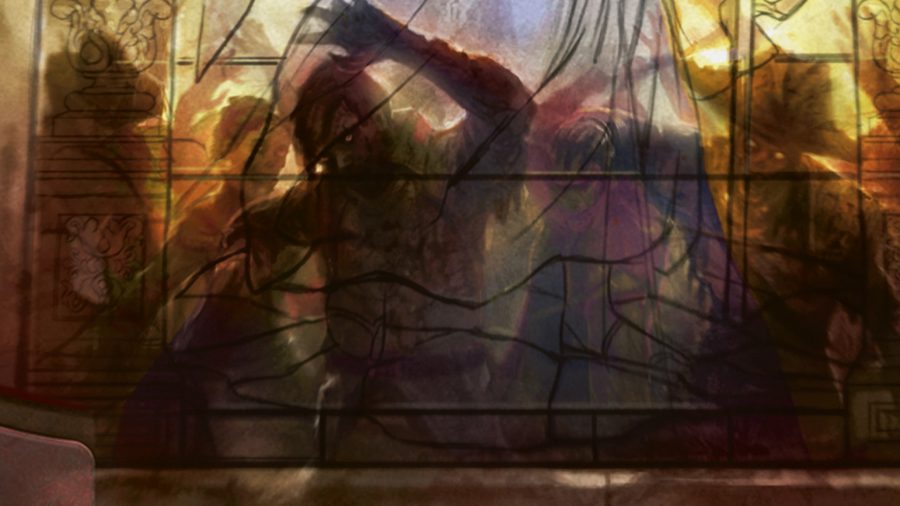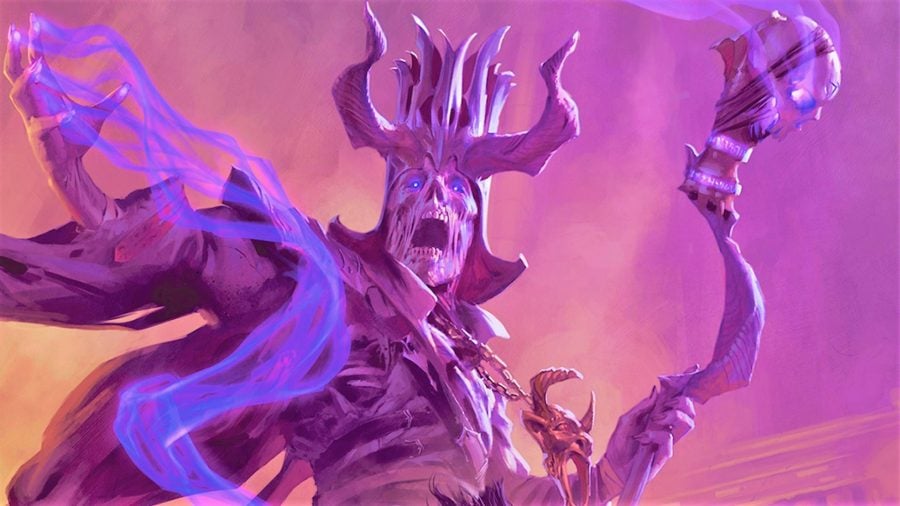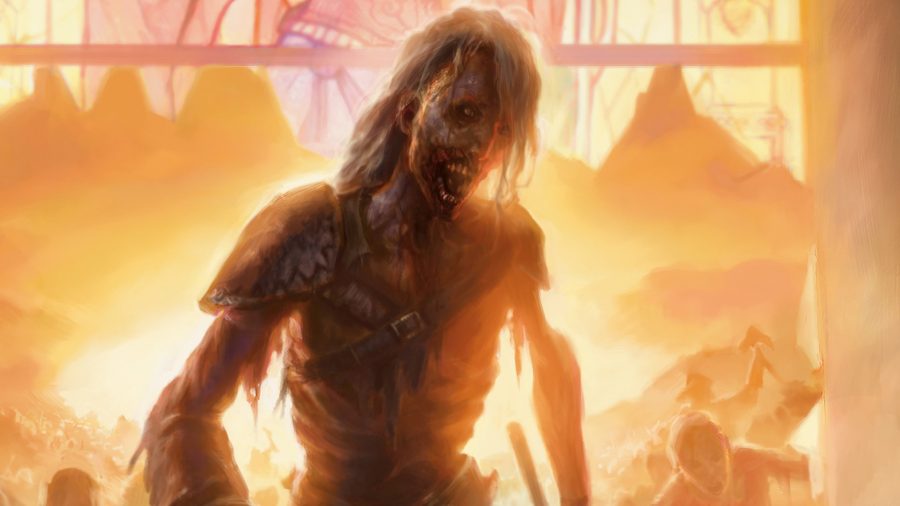They’re coming to get you, Barbarian – the zombie 5e is shambling over to sink its teeth into your DnD campaign. Raised from the grave by powerful necromancy, these hunks of decaying flesh are incapable of memory, thought, or imagination. This makes them great minions for any Big Bad Evil a Dungeon Master (DM) plans to throw at their party. Low on braiiiins but relatively high on hit points, zombies also make useful punching bags for more beginner players.
Just like in the world of film and videogames, each iteration of the zombie is different. Heck, every franchise even desperately tries to rename the zombie – at least with zombie 5e, the monster does what it says on the tin. This guide covers all the lore you need to insert a zombie seamlessly into your fantasy setting.
Unfortunately, this beginner monster can quickly become boring if DMs can’t find ways to give it new life. That’s what we’re here for – in this guide, you’ll find all the basic stats you need to stage your own Night of the Living Dead. Then, when you’re ready to revolutionise the DnD zombie genre, we can talk tactics.
Ready to raise hell? Here’s everything you need to know about the zombie 5e monster:

What is a zombie 5e
Whether brought back by a spell or an oversaturation of dark energy in a particular area, all zombies are corpses reanimated by necromantic magic. They tend to be humanoids, but they aren’t always.
Once they’ve absorbed enough dark magic to get moving again, they’ll likely be pretty rotten, bloated, and gross, as the magic takes a little time to take full effect. We’re sure no one complains – it’s probably good for a necromancer’s street cred to have extra-disgusting minions. Like all undead, zombies don’t need air, food, drink, or sleep. They have a speed of 20ft, so you can expect to meet slow shamblers in battle.
Do the mash: A guide to the best DnD monsters
There are a few things the zombie 5e is not. Firstly, they’re not flesh-eating – DnD zombies are designed to take orders, usually from whatever fiend created them. Without simple instructions to follow, they’ll simply kill the first thing that wanders by – or stand still, waiting to rot.
Being significantly less bite-y than their cultural counterparts means DnD zombies also aren’t designed to infect people. If you’re looking to adapt your favourite horror films for DnD, you might want to look into a homebrew zombie.

Zombie 5e stats
These are the zombie 5e stats provided by the Monster Manual:
| Challenge rating | 1/4 (50XP) |
| Proficiency bonus | +2 |
| Armour class | 8 |
| Hit points | 22 (3d8 + 9) |
| Speed | 20ft |
| Strength | 13 (+1) |
| Dexterity | 6 (-2) |
| Constitution | 16 (+3) |
| Intelligence | 3 (-4) |
| Wisdom | 6 (-2) |
| Charisma | 5 (-3) |
| Damage immunities | Poison |
| Condition immunities | Poisoned |
| Saving throws | Wisdom +0 |
| Senses | Darkvision 60ft, Passive Perception 8 |
| Languages | Understands the language it knew in life but can’t speak |
| Abilities | Undead Fortitude |
| Actions | Slam |
Undead Fortitude means, when a zombie is reduced to zero hit points, it must pass a Constitution saving throw (difficulty class of five plus the damage inflicted by the killing blow). If it passes, it drops to one hit point instead of dying; a failed roll means the zombie goes back to the grave. This roll doesn’t happen if the damage is radiant damage or dealt by a critical hit.
Hunter’s moon: A DnD werewolf 5e guide
The Slam action is a melee weapon attack. It requires plus three to hit, has a range of five feet, and can only hit one target. A successful slam deals four (1d6 + 1) bludgeoning damage.

How to use zombie 5e
When deciding how to use a 5e zombie, consider its core features. It’s a slow, unintelligent, low-challenge enemy, but it has a surprisingly beefy hit point number for its difficulty level.
The low difficulty level means this could be a useful enemy to introduce to new players. Three zombies are enough to make a medium-difficulty encounter for a party of five level-one players, for example.
Stay spooky: Check out our guide to DnD’s Ravenloft
The hit points become crucial for encounter builders once you’re into boss fight territory. A powerful boss will likely have zombie minions on-hand to soak up damage – or even spell slots (zombies are particularly weak against spellcasters, so an over-zealous Wizard might mistakenly take advantage of all their opponent’s negative modifiers).
Zombie hordes are definitely doable once characters level up a little more, as you’ll need an army to even touch a higher-level player. However, DMs must take care with large or long zombie encounters. Shambling and slamming will get dull after a while.

If you’re building zombie-heavy encounters or campaigns, we recommend adding variety. There are already plenty of zombie 5e variations if you have the right books – adding an Ogre Zombie, Beholder Zombie, or even a Tyrannosaurus Zombie can give a fight some more spice.
Run the world: How to be a DM in D&D
A homebrew zombie can add even more variety (and get around those players who might know the stat blocks as well as the DM does). Think of how many different zombies there are in videogames like Left 4 Dead – a zombie that spits acid, explodes upon contact, or has sudden super strength would be a welcome addition.
